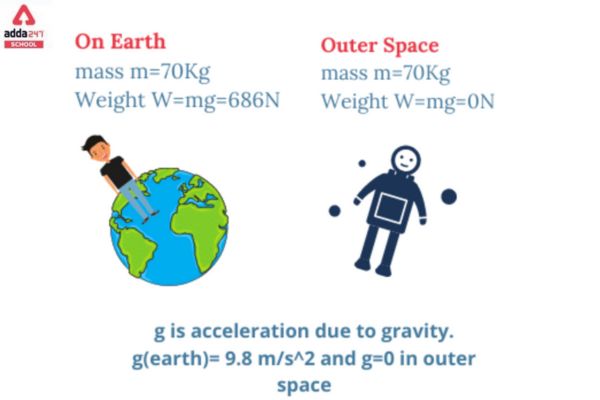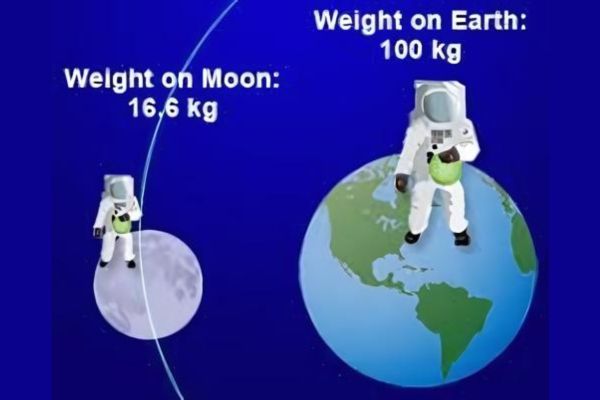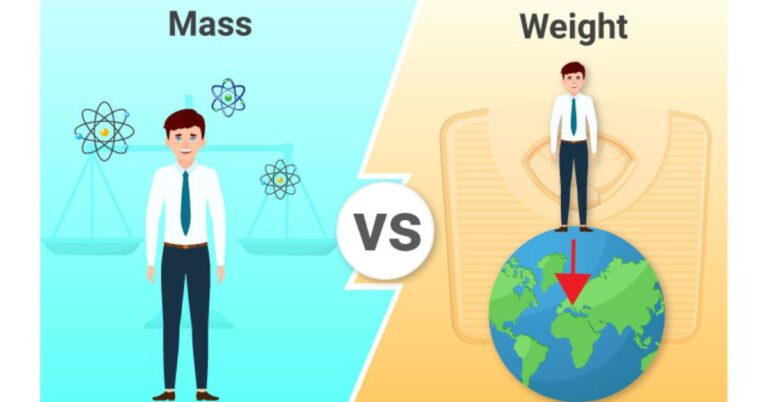Why is the weight of the same object more on earth and less on the moon, meanwhile the mass remains the same?
This is because mass and weight are two different things. Many people are confused about them but they are not the same.
In this blog, we’ll explain the difference between mass and weight for objects on Earth and on the Moon.
Why It’s Important to Understand Mass and Weight

Many people think mass and weight mean the same thing but they don’t. Mass is the amount of matter in an object and it never changes no matter where you go. On the other hand weight depends on gravity.
Here’s the basic formula to understand it:
Weight = Mass × Gravity (W = m × g)
This formula shows that weight depends on mass and the gravity of the place you’re standing on. On earth gravity is about 9.8 m/s², while on the moon it’s only 1.62 m/s².
This is the reason the weight of an object is less on the moon even though the mass hasn’t changed at all.
What Is Mass and Why It Doesn’t Change on the Moon
Mass is the amount of matter that makes up an object. It tells us how much “stuff” is inside something, whether it’s a rock, a person or a car.
The important thing to know is that mass doesn’t change no matter where the object is. Whether you’re on earth, the moon or floating in space, your mass stays exactly the same.
Mass Stays the Same in Space or on Earth
For example you have a backpack that has a mass of 10 kilograms.
On Earth, it’s 10 kg.
On the Moon, still 10 kg.
Even in deep space, it remains 10 kg.
Mass is measured in kilograms (kg) using a balance scale, which works the same in any location. This makes mass a universal value no matter where you are.
What Is Weight and How Gravity Affects It
Weight is not constant, it depends on the force of gravity acting on an object. Weight changes from one place to another because gravity is different on each planet or moon.
Gravity Makes Objects Feel Heavier or Lighter
Weight is a force, and it’s calculated using the formula:
Weight = Mass × Gravity
It’s measured in newtons (N), the unit for force.
Let’s take an example. If an object has a mass of 10 kg:
On Earth, where gravity is 9.8 m/s², the weight is:
10 × 9.8 = 98 N
On the Moon, where gravity is 1.62 m/s², the weight is:
10 × 1.62 = 16.2 N
So, even though mass stays the same, the object’s weight goes up or down depending on the location.
How the Same Object Weighs Differently on Earth and the Moon

Gravity is the main reason why the same object feels heavier on earth and lighter on the moon. Earth has stronger gravity so it pulls more on objects. The moon’s gravity is much weaker which is why astronauts can jump higher and easily carry heavy tools.
Let’s take a 10 kg object as an example. On Earth it weighs 98 newtons (N) because gravity here is 9.8 m/s². On the Moon, gravity is only 1.62 m/s², so the same object weighs just 16.2 newtons (N).
Here’s a quick comparison:
Earth gravity: 9.8 m/s² → Weight: 98 N
Moon gravity: 1.62 m/s² → Weight: 16.2 N
Clear Differences Between Mass and Weight in Simple Words
Sometimes we mix up mass and weight, but they are not the same. Mass is the amount of matter in an object and it never changes, whether we are on earth, the moon or anywhere else. Weight on the other hand depends on gravity and it will change if we change the place of an object.
Summary Table for Easy Comparison
| Point | Mass | Weight |
| What it measures | Amount of matter | Force of gravity on mass |
| Affected by gravity? | No | Yes |
| Change with the location? | No | Yes |
| Units used | Kilograms (kg) | Newtons (N) |
| Same on the moon? | Yes | No |
You may also want to know:
Weight of an object on earth, moon, sun and pluto
Final Thoughts on Mass, Weight and Gravity
The weight of an object on the moon will be lighter than on earth even when the body remains the same.
This happens because mass and weight are two different things, mass is the amount of matter of any object while weight is a gravitational force that earth or moon apply on an object.



